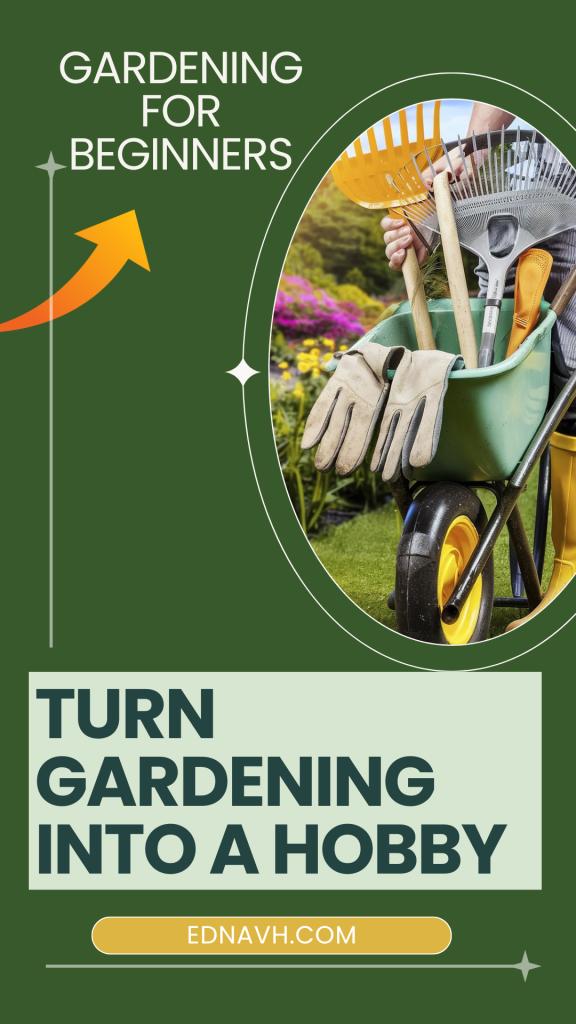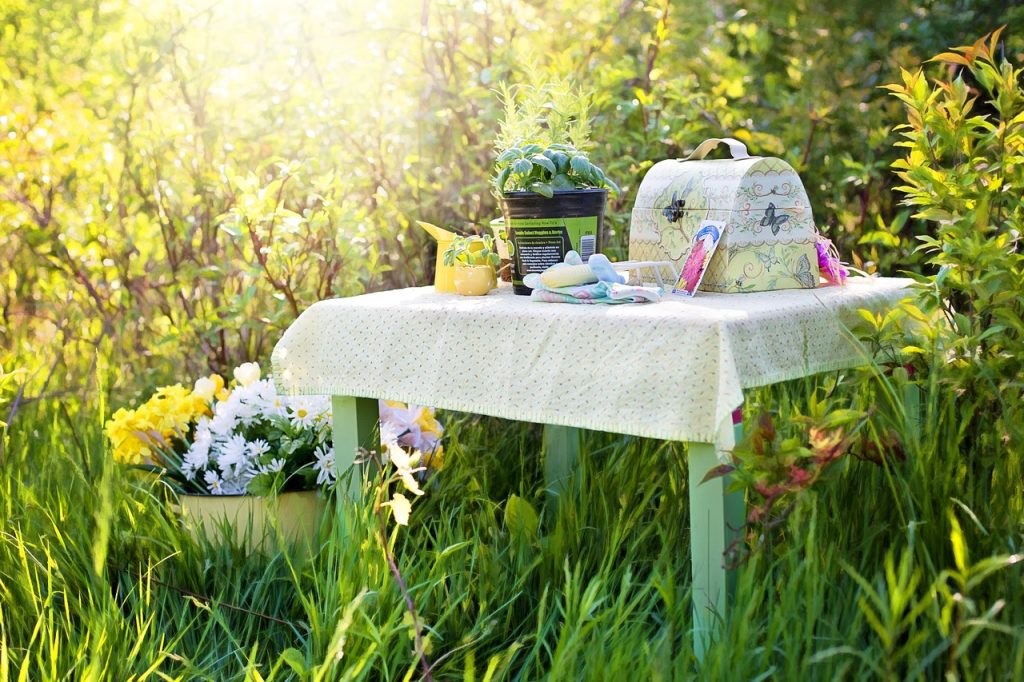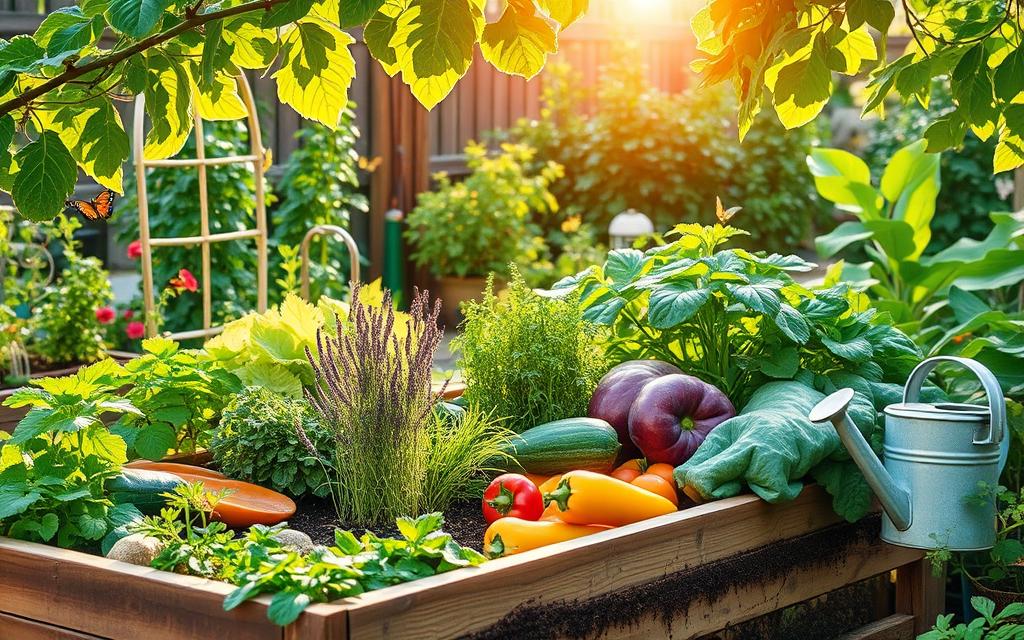Are you interested in starting your garden but need help knowing where to begin? If yes, then you are in the right place. I am no expert, so the title says Gardening for Beginners – turn gardening into a hobby. That way, you make it fun and not boring.
I may not have a green thumb, but my mom does. Nevertheless, it doesn’t mean I can’t excel at gardening. I try to make it enjoyable so I don’t lose interest.
Gardening For Beginners -Daily Gardening Routine
I try to have a daily/morning routine to water my plants, pull some weeds, and be on the lookout for crickets or any other bug that loves to eat leaves. I live in Florida and have to care for them more during the summer because of the heat and the crickets.
Gardening can be a fulfilling and therapeutic pastime. It’s also a great way to connect with nature and grow food. If you’re new to gardening, here are some essential gardening tips to help you get started.

Disclaimer: This post contains affiliate links, which means I may earn a small commission if you purchase through these links at no extra cost. Thank you for supporting my blog!
STEP 1: Start with the Basics
Before you begin, it’s essential to understand the fundamentals of gardening. This includes knowing your hardiness zone, understanding the different soil types, and learning about different plants’ sun and water requirements.
Quick Recommendation: 1,001 Gardening Tips & Tricks: Timeless Advice for Growing Vegetables, Flowers, Shrubs, and More

STEP 2: Choose the Right Location
When starting a garden, it’s essential to choose the correct location. Most plants require at least 6 hours of sunlight daily, so pick a spot with adequate sun exposure.
Additionally, ensure the area has access to water and is easily accessible for regular maintenance.
STEP 3: Start with Easy-to-Grow Plants
Starting with plants that are easy to grow and maintain is best for a beginner.
Here are five easy-to-grow plants that can thrive in various climates:
- Tomatoes: Tomatoes are one of the most popular and versatile plants for home gardens. They require full sun and well-drained soil. They can be grown in containers or garden beds, and many varieties are suitable for different climates.
- Basil: Basil is a hardy herb that grows well in various climates. It needs full sun and well-drained soil. Regular harvesting encourages more growth, making it an excellent choice for any garden.
- Lettuce: Lettuce is a cool-season crop that can be grown in most regions. It prefers partial shade and well-drained soil. Many varieties, from loose-leaf to head lettuce, can be grown throughout the year in different climates.
- Radishes: Radishes are one of the easiest and fastest-growing vegetables. They thrive in full sun and well-drained soil and can be harvested in as little as 3-4 weeks. They are suitable for both spring and fall planting.
- Marigolds: Marigolds are hardy flowers that can grow in various climates. They prefer full sun and well-drained soil. They are also known for their pest-repelling properties, making them excellent companion plants for vegetable gardens.
These plants are generally low-maintenance and adaptable, making them excellent choices for beginner gardeners or anyone looking to add some easy-to-grow plants to their garden.
I’m sure there are more to add to this list, but here are some you can start with.
Quick Recommendation: Survival Vegetable Seeds Garden Kit Over 16,000 Seeds Non-GMO and Heirloom, Great For Emergency Bugout Survival Gear 35 Varieties Seeds For Planting Vegetables 35 FREE Plant Markers Gardeners Basics

STEP 4: Invest in Good Quality Tools
Make gardening more accessible and more enjoyable by using the right tools.
Start with a few basic tools, such as a trowel, hand fork, pruning shears, and a watering can.
As you gain more experience, consider investing in additional tools and equipment.
Personal Favorite: Gardening Tools 9-Piece Heavy Duty Gardening Hand Tools with Fashion and Durable Garden Tools Organizer Handbag, Rust-Proof Garden Tool Set, Ideal Gardening Gifts for Women.
STEP 5: Learn From Others
One of the best ways to learn about gardening is to connect with other gardeners.
Joining a local gardening club or community garden can be a great way to communicate with other gardening enthusiasts and learn new techniques.
You can also find a wealth of information online through gardening forums, blogs, and social media groups.
Here are five top-rated blogs that provide excellent gardening tips for beginners:
- Garden Betty – gardenbetty.com
- Garden Betty offers a wealth of information on gardening, from growing vegetables and herbs to homesteading tips. The blog is beginner-friendly and provides practical advice and step-by-step guides.
- The Prairie Homestead – theprairiehomestead.com
- This blog focuses on modern homesteading and includes many helpful gardening content. It’s great for beginners looking to start their vegetable garden or learn about sustainable living.
- Garden Therapy – gardentherapy.ca
- Garden Therapy provides a variety of DIY gardening projects, plant care guides, and recipes. The blog is perfect for beginners and those interested in the therapeutic aspects of gardening.
- A Way to Garden – awaytogarden.com
- Created by Margaret Roach, A Way to Garden offers expert advice and tips for gardeners of all levels. The blog covers various topics, from basic gardening techniques to more advanced horticultural practices.
- The Old Farmer’s Almanac – almanac.com
- The gardening section of The Old Farmer’s Almanac website is a fantastic resource for beginners. It provides planting calendars, growing guides, and various tips and tricks for successful gardening.

STEP 6: Be Patient and Observant
Gardening takes time and patience, so don’t be discouraged if things don’t go perfectly initially. Monitor your plants and learn to recognize signs of pests, disease, or nutrient deficiencies.
Mom knows best, yep! My mom has a green thumb and always says to be patient with the plants, and they will grow. Oh well, I’ll try not to get too impatient.
You’ll become more adept at caring for your garden and troubleshooting any issues with practice.
Remember, gardening is a learning process, and making mistakes is okay. Most importantly, enjoy the experience and have fun nurturing your plants.
Whether you have a large backyard or just a tiny balcony, anyone can enjoy gardening with time, effort, and enthusiasm.
Gardening For Beginners – Final Thoughts
Gardening is more than just a hobby; it’s a journey toward a more fulfilling and sustainable lifestyle. Whether you’re looking to beautify your surroundings, grow your food, or find a peaceful retreat from the hustle and bustle of everyday life, gardening offers something for everyone.
As a beginner, it’s normal to feel a bit overwhelmed initially, but with patience and persistence, you’ll find your green thumb and develop a deeper connection to nature. Remember, the most important thing is to enjoy the process, learn from your experiences, and celebrate each small victory. Happy gardening!
Frequently Asked Questions – FAQ
Q: Do I need a large garden space to start gardening?
A: No, you don’t need a large space to start gardening. You can begin with a small plot of land, a few pots on a balcony, or even an indoor herb garden. The key is to start with what you have and expand as you gain confidence.
Q: What are some easy plants for beginners to grow?
A: Some beginner-friendly plants include herbs like basil and mint, vegetables like lettuce and tomatoes, and flowers like marigolds and sunflowers. These plants are generally low-maintenance and provide quick rewards, which can encourage new gardeners.
Q: How often should I water my plants?
A: Watering frequency depends on the type of plants you’re growing, the climate, and the soil. A general rule of thumb is to water deeply and less frequently, allowing the soil to dry out slightly between watering. For most plants, watering once or twice a week is sufficient, but always check the specific needs of your plants.
Q: What type of soil is best for gardening?
A: The best soil for gardening is well-draining, nutrient-rich soil. You can improve your garden soil by adding compost or organic matter, which enhances soil structure and provides essential nutrients. Testing your soil can also help you determine what amendments are needed.
Q: How can I protect my garden from pests?
A: To protect your garden from pests, use natural methods like introducing beneficial insects (e.g., ladybugs), planting pest-repellent plants (e.g., marigolds), and using organic pest control products. Regularly inspecting your plants for signs of pests and taking action early can prevent infestations.
Q: Do I need to use chemical fertilizers to have a successful garden?
A: You don’t need chemical fertilizers to have a successful garden. Many gardeners prefer organic fertilizers, such as compost, manure, or worm castings, which provide nutrients naturally and improve soil health. Organic gardening practices are also safer for the environment and your health.
Share your gardening skills or thoughts about this post in the comments below.

